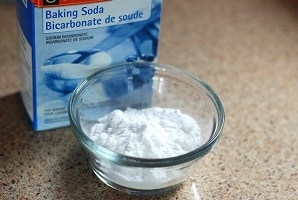Tips On How to Choose Fresh Seafood
How to choose fresh seafood from the market is a tough question and people have different answers to it.
Some people might say that you should never judge a book by its cover while some others might agree that it is the real test of how to choose fresh seafood from the market. Actually, there are many tips to choose fresh fish but the bottom line is that you should be able to identify one that is real and not a fake. In fact, when you go out there to shop, try to go with the fish that are fresh. When we refer to ‘fresh fish’, it means those that are caught straight away from the sea without being cleaned or any process like that. There are several tips to choose fresh seafood from the market.
Tips #1 – Location of the market
To begin with, you need to check the location or the store where the fish is coming from. The best way is to find the nearest store to you. It should also be located in an area where you can easily access. If you cannot find it, try calling the store on the phone number given and inquire from the associate about the nearest location of that particular store.
Tips #2 – How the seafood being stored
You also need to know how the fish is being stored prior to buying it. Make sure that the place where you are going to buy is not one of those places that does not keep their fish properly. As you may have noticed when you were buying other types of fish, the ones kept in boxes or bags are the ones that are the freshest.
Tips #3 – Check the color of the fish
Once you have already located a store where you can buy fish, it’s time for you to know how to choose fresh fish from the market. In fact, it is very easy. You just have to look at the fish and feel it. If you feel that the color is dark red, then it is fresh. If you feel that it is lighter colored, then it is probably stale.
Tips #4 – Looking at the scales
The next tip on how to choose fresh seafood from the market is by looking at the scales that are used to weigh the fish. It is very easy to determine whether or not the fish is fresh by just looking at it. If you feel that it is not at all heavy, then it is most likely stale. On the other hand, if you see that it is a bit heavier than you expected, then it is most likely fresh. The scales that are used to determine how fresh the fish are also indicate the temperature of the water where they were caught.
Tips #5 – Check on the bone of the fish
The third tip on how to choose fresh seafood from the market is to check on the bones of the fish. Usually, the buyers will not take these bones since they think that it might affect the taste of the seafood. But, if you want to get a high quality product, then you have to include the bones in your order. This is very important since it will help you determine the freshness of the product that you are purchasing.
Tips #6 – Purchase in small containers
The fourth tip on how to choose fresh seafood from the market is to purchase the product in small containers. If the product is leftovers, it can cause spoilage. This is why buyers should know how to choose fresh fish from the market by ensuring that they only purchase small containers of fish per order. By ensuring that they only purchase small containers, they will be able to save a lot of money since they do not need to buy a large amount of containers for their business. This will also prevent them from spending money on large containers of fish when they only need a few.
Tips #7 – Check the activeness
Tips on how to choose fresh seafood: mussels or clams, if they’re opened or if they’re open and there is some air still inside when you tap them, they close. Fish, especially red snapper, the skin around the head is firm, when you pick it up, it’s big, firm, mouth-watering, open.
Lastly, if you want to learn how to choose fresh seafood from the market, then you have to know that buying from the store will give you a lot of advantages. By purchasing the fish from the store, you will be able to save money and avoid spending too much for the purchase. However, there are some disadvantages that you also need to consider such as the limited number of items that you can purchase and the absence of any guarantee regarding the freshness of the product that you are purchasing.




